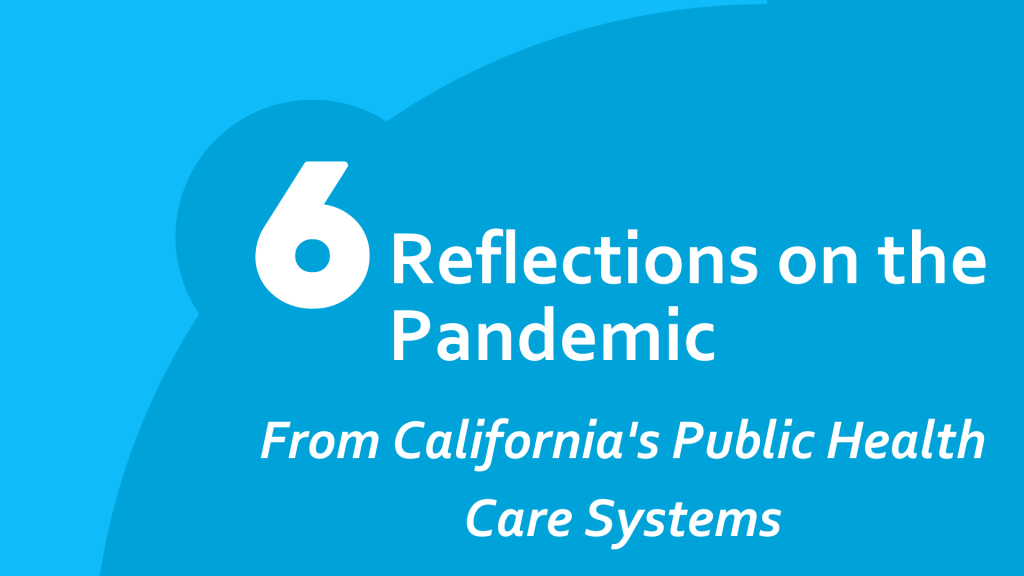Across California, long lines of people who waited for COVID-19 tests mirrored those eager for food. Whether a retail clerk in Compton, an undocumented farmworker in Salinas, or someone experiencing homelessness in San Jose, these residents have had crushing and inseparable medical and non-medical needs throughout the pandemic. COVID-19 has disproportionally impacted them in every way.
For two and a half years, millions of people, many of whom face financial hardship and complex health issues, have been safeguarded, supported, and cared for by those working at the core of the state’s health care safety net: California’s 21 public health care systems. Nurses, doctors, medical assistants, community health care workers, and others have been fiercely motivated by their mission to serve those who need care the most.
During the pandemic, these workers’ dedication to patients and steadfast belief in them spurred creative new ways to meet their communities’ urgent and wide-ranging needs. Here are six reflections from California’s public health care systems during COVID-19:
#1: Large public health care systems moved with nimbleness and speed to address patient needs.
To meet the multilayered needs of underserved patients with COVID-19 and those at risk of contracting the quick-spreading virus, large, sometimes 100-year-old health care systems with thousands of employees transformed into hotbeds of innovation.
Acutely aware that they had to move faster than the virus to save lives, health care workers dexterously adapted to changing circumstances in real time.
“We knew we could meet the need because of how tight-knit this team is.”
– Jonelle Morris
Although in new territory, they successfully and rapidly designed and launched an exhaustive list of different services and programs (and put staff in place to implement them) so they could provide quality care right away. As a result of the systems’ hyperfocus, patients received care through car windows, parking lot tents, cell phone screens, or in converted hospital storage areas.
For example, within 11 hours, Riverside University Health System – Medical Center (RUHS – Medical Center) successfully prepared a full-scale medical response to care for a plane of 200 potentially COVID-19 positive Americans evacuated from Wuhan in January 2020. “We knew we could meet the need because of how tight-knit this team is,” said Jonelle Morris, chief operating officer at RUHS – Medical Center and an RN.
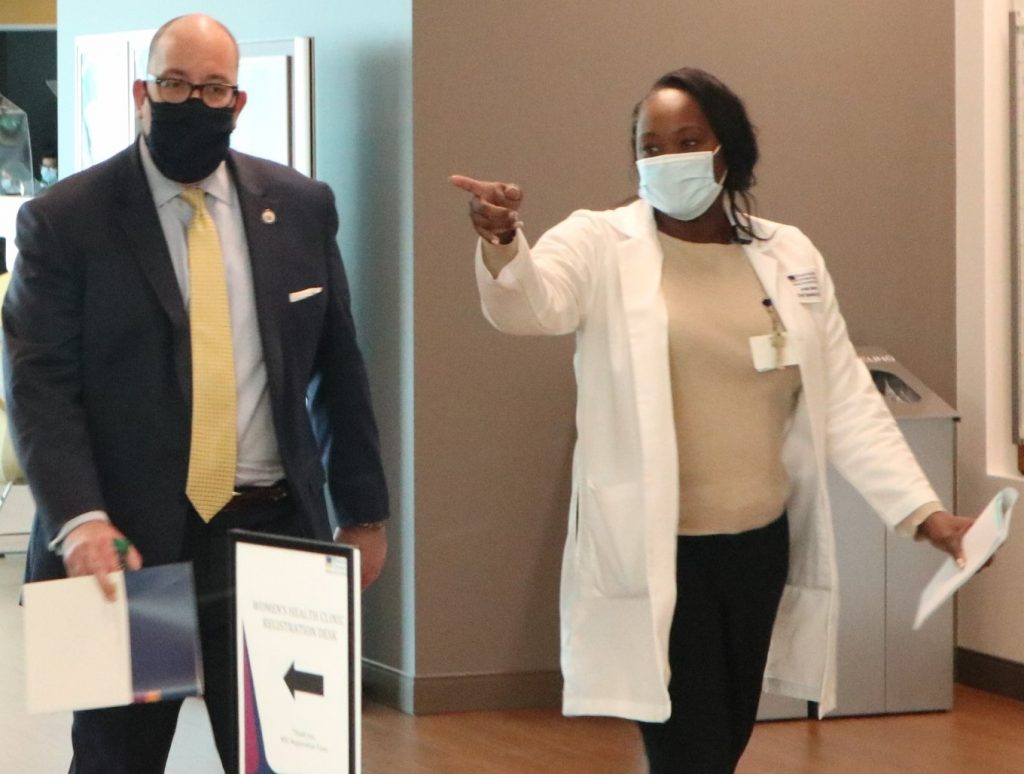
And when almost every person admitted to Zuckerberg San Francisco General Hospital (ZSFG) in the early days of the pandemic was Latino/Latina, the hospital swiftly teamed up with the Latino Task Force, a community organization, and the City and County of San Francisco in a partnership called Unidos en Salud. Together, they served in at-risk neighborhoods, providing testing, as well as food, a quarantine site, and city-provided income support.
By repeatedly asking – not assuming – what the hard-hit community needed to stay safe, ZSFG led with scrupulous listening and the humility to change course and persevere through setbacks for a better outcome. It may have worked. “We [San Francisco] had the lowest death rate from COVID of any major urban area in the United States,” said ZSFG’s CEO Dr. Susan Ehrlich.
#2: Health care workers grew closer to patients and each other.
With visitors banned from patients’ hospital bedsides through most of the pandemic, health care workers played a familial role. They were often the first person to congratulate a patient on turning a corner or the last person to hold their hand.
To ensure patients don’t contract the virus in the first place, physicians had high-stakes conversations with patients who were on the fence about getting vaccinated. Dr. Atul Nakhasi, internist at Martin Luther King, Jr. (MLK) Outpatient Center, part of the Los Angeles County Department of Health Services, said he grew closer to patients – and they inched closer to vaccination – when they heard “my voice of genuine worry and authentic concern, which emotionally connects with them.”
Closer emotional bonds and greater transparency between patients and physicians were also sometimes an unexpected byproduct of telehealth visits. For instance, Dr. Stanley Patterson, family physician at Magnolia Family Medical Clinic and chief medical information officer for the Ventura County Health Care Agency, had a 20-something patient who was depressed show up for a video appointment from his bed. Another patient connected from a crowded apartment while his popcorn ceiling flaked away.
“When you have a video visit, it feels more intimate, like a home visit.”
– Dr. Stanley Patterson
But in the last two and a half years, it wasn’t just patients and providers growing closer; mission-driven health care workers already tight before the pandemic grew even closer to each other, too.
With nonstop record-high patient volumes, the steady-handed response from physically and emotionally exhausted nurses, physicians, respiratory therapists, and others often meant enduring personal hardships. They frequently turned to each other as a source of support.
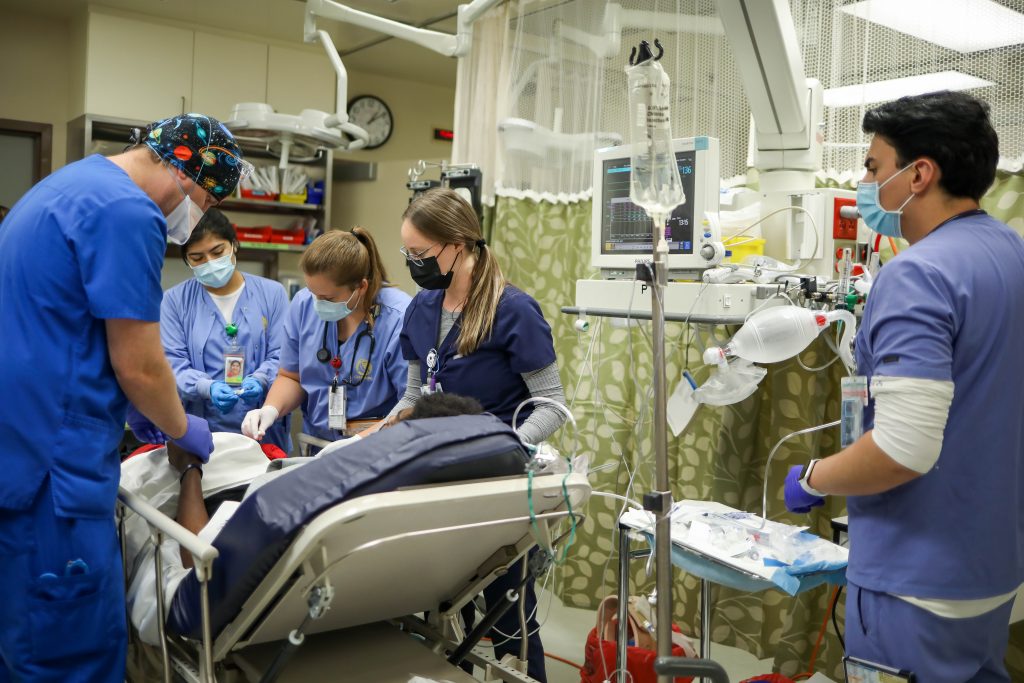
That’s certainly the case at Kern Medical where staff “talked things through a lot with one another, and I think that’s how they kind of decompressed,” said Natalee Garrett, vice president of strategic development at Kern Medical. This closeness might also be one of the reasons why nurses continued to show up day after difficult day. Paula Isbell, a nurse at Kern Medical, believed this deep loyalty to co-workers and “knowing that for you to leave would be devastating to them” was what kept many nurses on the floor.
#3: “I see more patients when I don’t see them in person.”*
A patient, himself a caregiver, called in for his appointment with a physician at San Mateo Medical Center (SMMC) while he was caring for another. He told the doctor he wouldn’t have made the appointment if it had been in person because of his demanding work schedule.
Across the state, patients facing financial hardships lacked the time, transportation or resources to make in-person appointments. But they clamored to connect with health care providers via video or phone calls during the pandemic.
At some public health care systems, patients continued to show up to their virtual appointments at rates 30 percent higher than pre-pandemic, in-person appointments for everything from diabetic complications to anxiety.
Patients participating in burgeoning grief groups on Zoom reported being just as satisfied with in-person groups.
These show rates revealed a massive, pent-up demand for patients to have their physical and psychological needs met in a way that meshes with their day-to-day lives. Providers reported patients propping their phones up on car dashboards, bathroom faucets, and stair railings, or holding them while in homeless encampments or work break rooms.
Yet, unexpectedly, patients were equally, sometimes even more, satisfied with their telehealth care than in person. Even patients participating in burgeoning grief groups on Zoom reported being just as satisfied with in-person groups.
Dr. Katherine Shadish, supervising mental health psychologist of San Mateo’s Integrated Behavioral Health department, believed these results might be explained by “the pull to connect on a human level, which is incredibly powerful, even when virtual and even when patients aren’t physically next to each other.”
* Dr. Stanley Patterson, Ventura County Health Care Agency.

#4: Health equity was at the forefront with patient care delivered on subways, in strawberry fields, and at home.
From the earliest days of the pandemic, the data was unequivocal: California’s Latino/Latina and Black residents were more likely to contract COVID-19 and experience higher rates of hospitalization and death than white residents. They also had greater challenges accessing care.
The state’s public health care systems sprung into action. Building on their longstanding experience in this area, they went to where those at highest risk lived, worked, commuted, prayed, and ate, providing medical care alongside social interventions.
In the first days of the pandemic – before there were available tests or vaccines – more than 55,000 Latino/Latina agricultural workers in Monterey County were at heightened risk of the virus because of their frequent inability to socially distance at work or home. Despite few tools at their disposal, doctors, residents, and nurses from Natividad Medical Center, the local public health care system, stood in these fields and adjacent parking lots to arm farmworkers with what they did have: information on how to protect themselves and their families from COVID-19.
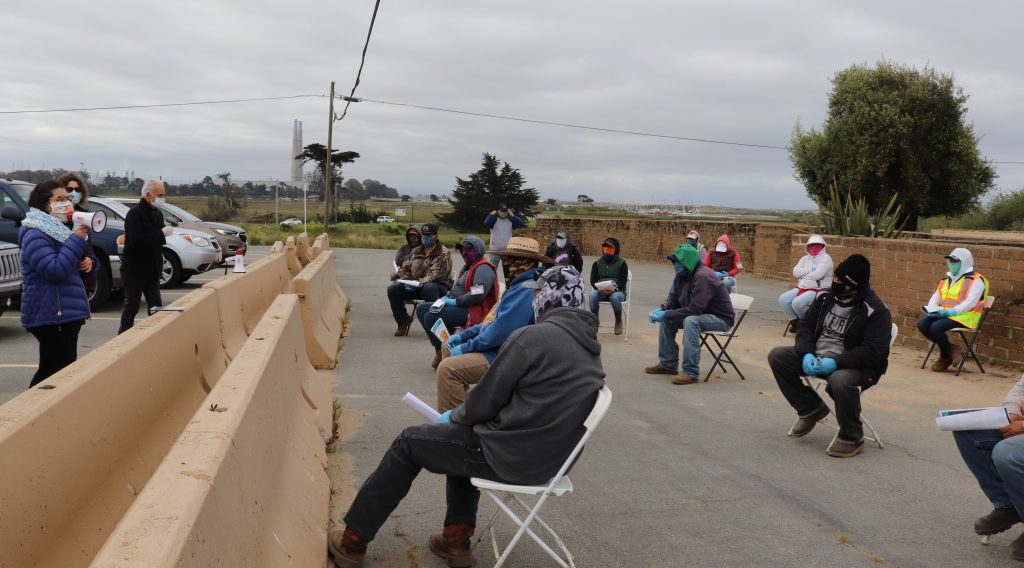
Then, when tests and vaccines became available, health care workers across California administered millions of them, and a wide range of care at community halls and churches in South L.A.; alongside ravines and inside encampments in San Jose; at union headquarters and soup kitchens in and near Bakersfield; outside Bay Area BART stations; in Monterey’s fields; on the side of Coachella Valley roads; and in patients’ homes. They delivered this care to people from pop-up tents, refashioned RVs, massive mobile clinics, small vans, backpacks, or simply a health care worker on foot in a sturdy pair of sneakers.
Health care systems also sought to decrease inequities of telehealth use so communities of color and those struggling with financial hardships would not be left behind as more and more care shifted to virtual settings. During the pandemic, two public health care systems launched groundbreaking telehealth programs, including one focused on improving access to care for farmworkers.
- For farmworkers with hypertension and/or diabetes, UC Davis Health and Livingston Community Health co-launched an ambitious pilot in the Central Valley to provide patients with digital devices, technology, training, and a health coach to improve their illness management. “We have seen substantial improvements for both diabetes and hypertension,” said Dr. Katherine Kim, adjunct associate professor, UC Davis, School of Medicine, Public Health Sciences Department, and principal at MITRE, Health Innovation Center.
- For patients who would prefer to leave the hospital to recover at home, when it’s medically safe and appropriate, UC Irvine Health rolled out a first-in-the-state, at-home monitoring program. Patients have reported being “really happy with the program,” said Khurram Mir, senior program manager at UCI Health.
#5: Patients rapidly received food, housing, and connections to social programs.
“You can’t be well if you’re not safe and fed,” said Dr. Rakhi Singh, supervising physician at San Mateo Medical Center’s Fair Oaks Health Center. Like thousands of other doctors at public health care systems, she delved more deeply when asking patients about their need for food, housing, and financial assistance since COVID-19 emerged.
Providers prioritized these essential patient needs, also called social determinants of health, alongside medical care. Public health care systems became the super glue (and sometimes, the super advocates), connecting patients with government agencies and community-based organizations to obtain services and resources.
For example, the majority of unhoused people in Santa Clara County, who sheltered at 14 hotels leased by the county during the pandemic, received additional care and services – from food stamps to veterans’ benefits – than before COVID-19 took root. “We wanted them to be in safer positions in their lives,” said Adrian Malimban, a community health worker at Santa Clara Valley Medical Center.
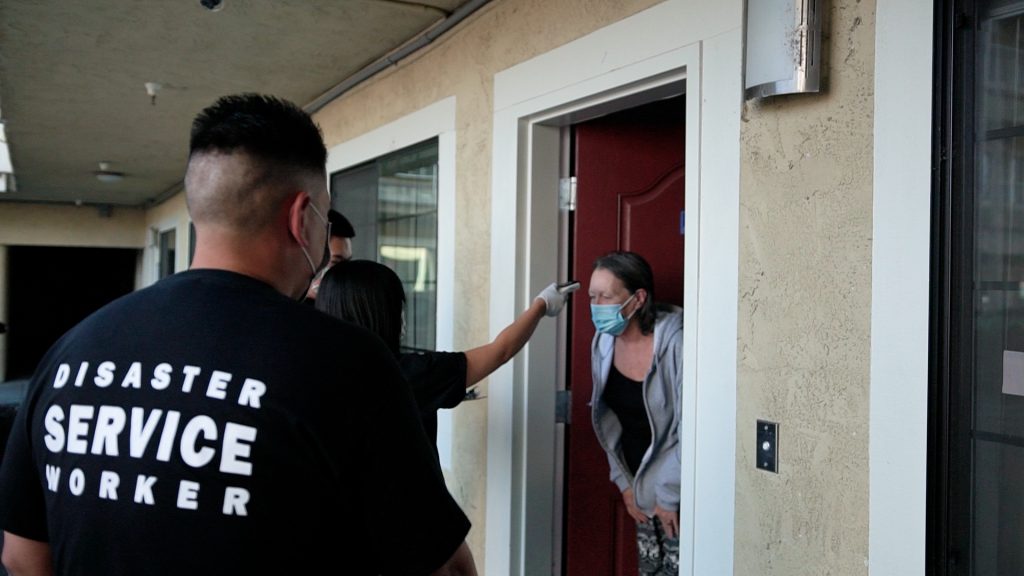
Just to the south of Santa Clara, Natividad Medical Center’s doctors, residents and nurses immediately recognized that migrant workers would suffer disproportionately from COVID-19. Providers offered information to thousands of agricultural workers about free housing for quarantining, state sick leave, and disability insurance regardless of immigration status. “We went into action early on,” said Dr. Erika Romero, a medical resident at Natividad Medical Center. “And because of that, I think we saved so many lives.”
#6: Silos crumbled and partnerships deepened.
Some patients needed oximeters delivered, leg wounds dressed, chronic illnesses managed, and manic episodes treated. Others needed assistance enrolling in Medi-Cal and applying for disability income. And some required a medication refill and a bus ticket back home to move in with family.
For patients who experienced homelessness in Santa Clara County and were sheltered at the county-leased hotels in 2020 and 2021, their wide array of co-occurring and complex needs was often met because county health care workers, other public employees, nonprofit staff, and community leaders pulled together in unprecedented collaborations.
“Everyone working across disciplines and departments was like a dream come true in the most unideal of circumstances,” said Alicia Anderson, senior manager at Santa Clara County’s Department of Behavioral Health Services.
Across the state, public health care systems met patients’ needs during the pandemic through deepened trust-based relationships and partnerships with other public agencies, schools, religious institutions, businesses, and local community groups.
This trust, built up over decades, meant health care workers worked more effectively and quickly to serve patients; they did not start from scratch. It also meant system leaders could leverage these relationships to tackle other burning issues, such as a scarcity of health care staff.
“We can do these things.”
– Dr. Huy Ngo
For example, Kern Medical, which, similar to many systems, faced a significant shortage of health care workers, expanded its partnership with East High School to grow its workforce pipeline. Working hand in hand, the neighboring high school and hospital co-developed a tailored program to train future medical assistants during the pandemic.
No let up ahead
As California residents continue to contract COVID-19 and require hospitalization, many others suffer from non-COVID-19 illnesses. Since the virus erupted, tumors have grown, chronic illnesses have worsened, and depressions have deepened. And California’s public health care systems continue to be there for patients in unwavering ways.

Amid the upheaval of the pandemic, the constant has been the dogged dedication of health care workers to their patients. “I am not giving up on this fight,” said Dr. Tasha Dixon, family medicine lead physician at MLK Outpatient Center.
This commitment has been strengthened by health care workers’ newfound confidence in creating more equitable models of care that don’t just meet patients where they are but help bring them to where they want to be: safe, supported, better.
“We can do these things,” said Dr. Huy Ngo, medical director, Special Populations and Transitions of Care, Santa Clara Valley Medical Center.
Learn more: read our full blog series on the essential role of public health care systems during the COVID-19 pandemic.

